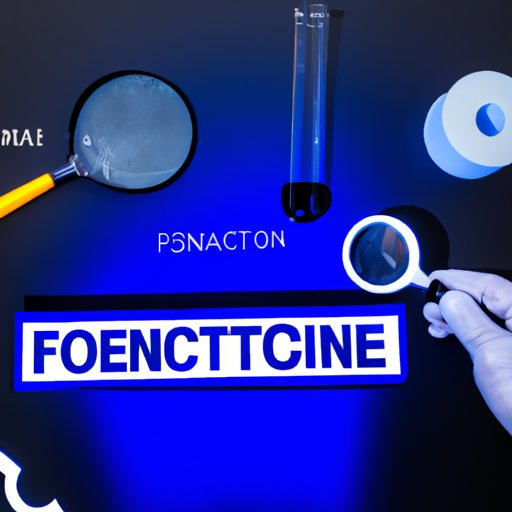Introduction
Forensic science has become an increasingly important part of criminal justice systems around the world. But what is the study of forensic science? It is an interdisciplinary field that combines scientific methods and principles with the law to investigate crimes and analyze evidence collected from crime scenes. Forensic scientists use a variety of tools and techniques to identify, collect, analyze, and interpret physical evidence related to criminal investigations.
Exploring the Basics of Forensic Science
The study of forensic science encompasses a wide range of topics, including biology, chemistry, anthropology, psychology, medicine, toxicology, engineering, and computer science. Each of these areas plays a critical role in helping investigators understand and explain the events that occurred at a crime scene.
Forensic science is essential in criminal justice as it helps to establish facts and provide evidence that can be used in court. This evidence can be used to prove innocence or guilt and can also be used to corroborate other evidence or testimony. Forensic scientists work closely with law enforcement officers, prosecutors, defense attorneys, and judges to ensure that all evidence is properly collected and evaluated.

Comprehensive Guide to the Field of Forensic Science
To understand the full scope of forensic science, it is important to examine the techniques used by forensic scientists, the types of evidence they analyze, and the benefits provided by their work.
Techniques Used in Forensic Science
Forensic scientists rely on a variety of techniques to analyze and interpret evidence. These include DNA and fingerprint analysis, microscopic examination of hair and fibers, chemical analysis of bodily fluids, and trace evidence such as gunshot residue. They also use specialized instruments such as spectrometers, chromatographs, and mass spectrometers to identify and analyze unknown substances.
Types of Evidence Analyzed
Forensic scientists analyze a wide range of evidence, including biological evidence (DNA, fingerprints, and bloodstains), physical evidence (bullet fragments, tool marks, and tire tracks), and digital evidence (computers and cell phones). They also examine documents and handwriting to determine authenticity, and use advanced imaging techniques such as X-ray diffraction and infrared spectroscopy to analyze complex evidence.
Benefits of Forensic Science
The study of forensic science provides many benefits to society. It helps to uncover the truth about criminal cases, which can lead to more accurate convictions. Forensic science can also help exonerate innocent people who have been wrongly accused of crimes. Additionally, forensic science can be used to solve civil cases, such as disputes over wills and contracts.
According to a study conducted by the National Institute of Justice, “the use of forensic science can play a crucial role in the investigation and prosecution of crimes, and can be instrumental in identifying and convicting criminals.” The study found that the use of forensic evidence can increase the likelihood of a conviction by up to 50 percent.

Examining the Impact of Forensic Science on Society
As technology advances, so too does the field of forensic science. Advances in technology have allowed forensic scientists to analyze evidence more quickly and accurately than ever before. For example, DNA testing can now be done in a matter of hours, instead of weeks or months, and new techniques such as mass spectrometry can detect trace levels of drugs and explosives.
However, advances in technology have also raised ethical questions about the use of forensic science. Many worry that the technology could be abused by police or prosecutors to obtain false confessions or manipulate evidence. Additionally, there are concerns that the technology could be used to invade privacy or compromise civil liberties.
In response to these concerns, many countries have implemented laws and regulations that govern the use of forensic science. These laws and regulations aim to protect the rights of individuals and ensure that forensic evidence is properly handled and analyzed.
Conclusion
The study of forensic science is an essential part of modern criminal justice systems. Forensic scientists use a variety of tools and techniques to analyze evidence, including DNA and fingerprint analysis, microscopic examination, chemical analysis, and trace evidence. They also examine documents and handwriting to determine authenticity. Advances in technology have made forensic science even more powerful, but have also raised ethical questions about its use.
Forensic science has many benefits, including helping to uncover the truth about criminal cases, exonerating innocent people, and solving civil disputes. As technology continues to advance, it will be important to ensure that the use of forensic science is regulated and that individuals’ rights are protected.
(Note: Is this article not meeting your expectations? Do you have knowledge or insights to share? Unlock new opportunities and expand your reach by joining our authors team. Click Registration to join us and share your expertise with our readers.)
